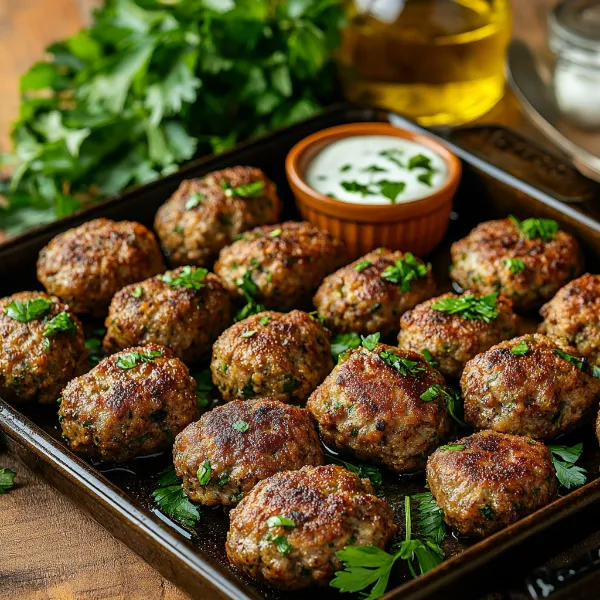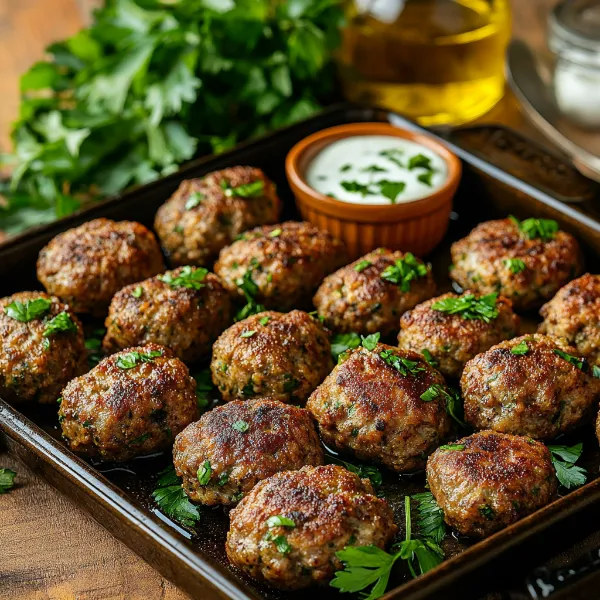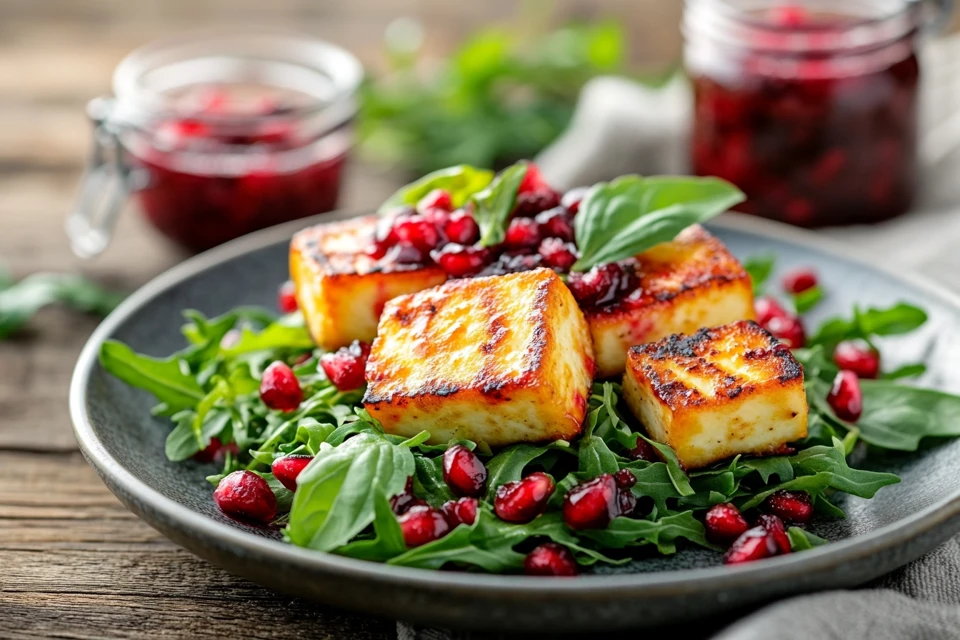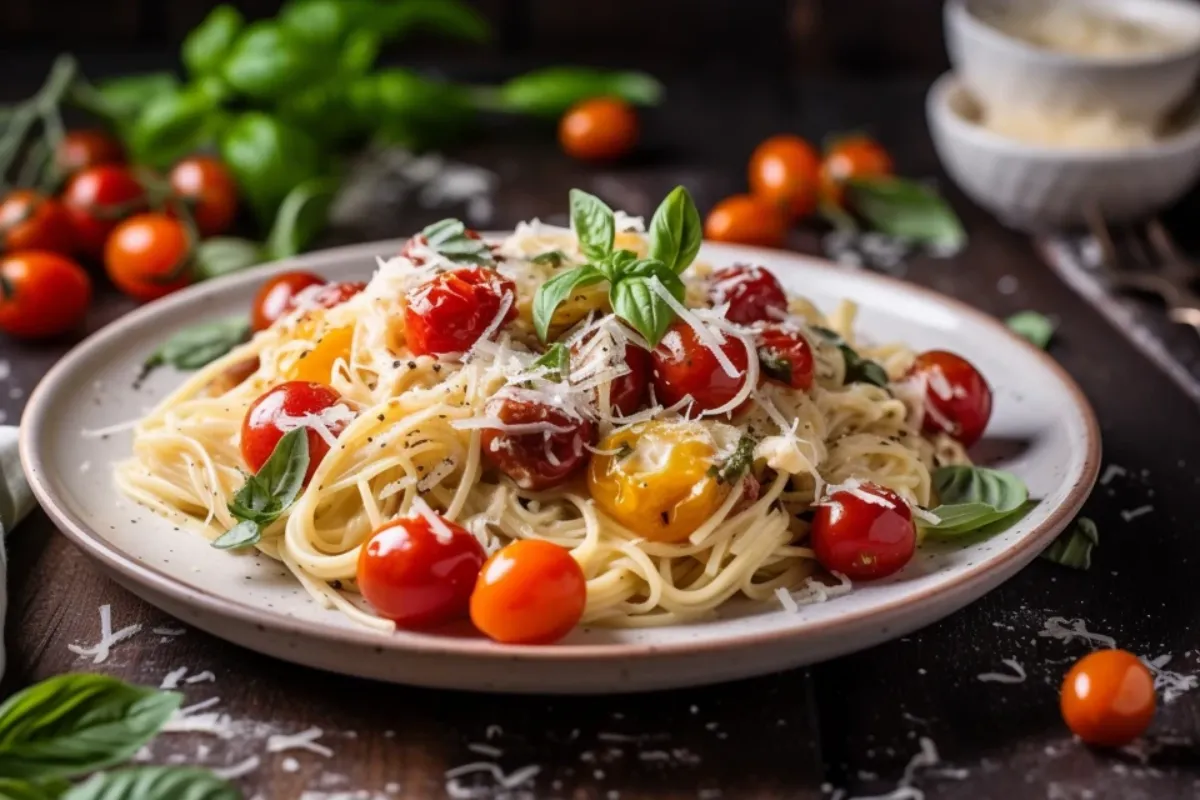Oven-baked meat kofta offers all the delicious flavour of traditional fried kofta with the added benefits of health, convenience, and simplicity. This guide introduces the dish, its key ingredients, and why baking is a superior choice for busy cooks.
Introduction to Oven-Baked Meat Kofta
What is Meat Kofta?
Meat kofta is a savoury dish made from ground meat seasoned with a blend of spices and herbs, shaped into patties, balls, or cylindrical forms. Kofta is popular in Middle Eastern, Mediterranean, and South Asian cuisines, often served with rice, flatbreads, or yoghurt-based sauces.
Benefits of Oven-Baking Over Frying
Baking kofta in the oven offers several advantages:
- Healthier Cooking: Baking requires little to no added oil, reducing the fat content.
- Convenience: No need to monitor frying pans, making the process simpler and faster.
- Even Cooking: The oven’s heat ensures that the koftas cook uniformly inside and out.
Origins of the Dish and Its Cultural Significance
Kofta has deep roots in Middle Eastern and Mediterranean cuisines, where variations of spiced meat dishes have been enjoyed for centuries. While traditionally fried or grilled, baking has become a modern adaptation that aligns with contemporary cooking habits.
Key Ingredients for Quick Meat Kofta
Ground Meat Options
- Beef: A versatile choice that balances flavour and affordability.
- Lamb: Offers a richer, more robust flavour for traditional recipes.
- Mix: A blend of beef and lamb combines the best of both worlds, creating juicy and flavourful koftas.
Essential Spices and Herbs
The signature taste of kofta comes from a combination of:
- Cumin and coriander for warmth and depth.
- Parsley and mint for freshness and balance.
Moisture-Enhancing Ingredients
- Onions: Finely grated to integrate into the mixture without overpowering.
- Garlic: Minced for a subtle, savoury kick.
- Yoghurt: Keeps the koftas tender and adds a touch of creaminess.
Binding Agents
- Breadcrumbs: Add structure and help absorb excess moisture.
- Egg: Ensures the koftas hold their shape during cooking.
- Alternatives: Crushed oats or almond flour for gluten-free options.
Why Choose Oven-Baked Kofta?
1. Healthier Method: Reduced Oil Usage
Baking eliminates the need for frying oil, making the dish lower in calories and saturated fats. This is ideal for those seeking a lighter, heart-healthy version of traditional kofta.
2. Less Mess and Easier Clean-Up
Oven-baking keeps the process contained, with no oil splatters or greasy pans to scrub. Line the baking tray with parchment paper for an even easier clean-up.
3. Ability to Cook in Large Batches
The oven’s capacity allows you to bake a large number of koftas at once, making it perfect for families, meal prep, or gatherings. It’s a time-efficient method that doesn’t compromise on flavour.

Step-by-Step Recipe for Oven-Baked Meat Kofta
Making oven-baked meat kofta at home is simple, quick, and delicious. This step-by-step guide ensures perfect results every time, with additional tips for saving time and streamlining the process.
Step-by-Step Recipe for Oven-Baked Kofta
1. Preparing the Kofta Mixture
Combining Meat, Spices, and Herbs
- In a large mixing bowl, combine the following:
- 500g ground meat (beef, lamb, or a mix).
- 1 small onion, finely grated, to add moisture and sweetness.
- 2 garlic cloves, minced, for a savoury kick.
- 1 teaspoon ground cumin and 1 teaspoon ground coriander for warmth and spice.
- 2 tablespoons chopped parsley and 1 tablespoon chopped mint for freshness.
- ½ cup breadcrumbs and 1 egg for binding the mixture.
- Mix gently with your hands or a spatula until everything is evenly distributed. Overmixing can make the kofta dense.
2. Shaping the Kofta
- Decide on the shape of your kofta:
- Cylinders: Traditional for kofta, offering a rustic appearance.
- Patties: Ideal for sandwiches or wraps.
- Meatballs: A versatile option for serving with sauces or rice.
- Scoop out equal portions of the mixture (about 2 tablespoons each) and shape them gently.
3. Preparing the Baking Tray
- Line a baking tray with parchment paper or lightly grease it with olive oil to prevent sticking.
- Arrange the kofta on the tray, ensuring they’re spaced apart to allow even cooking.
4. Baking at the Right Temperature
- Preheat your oven to 200°C (400°F).
- Place the tray in the middle rack and bake for 20–25 minutes.
- For extra browning, switch to the grill setting for the final 3–5 minutes.
5. Checking for Doneness and Preventing Overcooking
- To ensure the koftas are juicy and cooked through:
- Use a meat thermometer to check the internal temperature (70°C or 160°F for beef/lamb).
- Slice one open to confirm it’s no longer pink inside but still moist.
Time-Saving Tips for Quick Preparation
1. Using Pre-Ground Spice Mixes
- Save time by using ready-made kofta spice blends available at most supermarkets. These mixes often include cumin, coriander, paprika, and allspice for a traditional flavour profile.
2. Preparing the Mixture in Advance
- Mix the ingredients and store the uncooked mixture in an airtight container in the fridge for up to 24 hours. This allows the flavours to meld, enhancing the taste.
3. Shaping Koftas Uniformly for Even Cooking
- Use a small ice cream scoop or weighing scale to ensure each kofta is the same size. This guarantees even cooking and simplifies portion control.
Serving Suggestions and Variations for Oven-Baked Kofta
Oven-baked meat kofta is versatile and pairs wonderfully with a variety of sides, sauces, and fresh accompaniments. This part explores serving ideas, recipe variations, common mistakes to avoid, and tips for storage and reheating.

Serving Suggestions for Oven-Baked Kofta
1. Traditional Sides
Pair your oven-baked kofta with these classic options:
- Flatbreads: Warm pita or naan bread is perfect for wrapping around kofta with sauces and vegetables.
- Rice: Serve with fragrant basmati rice or a pilaf spiced with cinnamon, turmeric, and raisins.
- Couscous: A light and fluffy side, ideal for soaking up the juices from the kofta.
2. Sauces and Dips
Elevate the flavours with complementary sauces:
- Tahini Sauce: A nutty, creamy dip made with sesame paste, lemon juice, and garlic.
- Yoghurt Sauce: Combine plain yoghurt with cucumber, garlic, and mint for a refreshing tzatziki.
- Harissa: A spicy North African paste that adds heat and complexity to the dish.
3. Fresh Accompaniments
Add brightness with fresh elements:
- Salads: A crisp cucumber and tomato salad with a squeeze of lemon balances the richness of the meat.
- Pickles: Tangy pickled vegetables like turnips or peppers provide a zesty contrast.
- Roasted Vegetables: Charred aubergines, courgettes, or bell peppers enhance the dish’s rustic appeal.
Variations of the Oven-Baked Kofta Recipe
1. Vegetarian Option
Replace the meat with plant-based alternatives:
- Lentils or Chickpeas: Mash cooked lentils or chickpeas and mix with breadcrumbs, onions, garlic, and spices for a meat-free version.
- Plant-Based Meat: Use your favourite meat substitute for a quick and easy swap.
2. Mediterranean Twist
Incorporate Mediterranean flavours into the mixture:
- Feta Cheese: Crumble feta into the mixture for a tangy, creamy element.
- Olives: Add chopped Kalamata olives for a savoury burst.
- Sun-Dried Tomatoes: Finely chopped sun-dried tomatoes introduce a sweet, tangy depth.
3. Spicy Version
Turn up the heat for spice lovers:
- Chilli Powder: Add a teaspoon of chilli powder to the meat mixture.
- Fresh Chillies: Mince fresh red or green chillies and mix them into the kofta for a fiery kick.
Common Mistakes and How to Avoid Them
1. Preventing Dryness
- The Problem: Using overly lean meat can result in dry koftas.
- The Solution: Choose meat with a fat content of around 15–20% for moisture. Add grated onion or a dollop of yoghurt to enhance tenderness.
2. Ensuring the Mixture Binds Well Without Crumbling
- The Problem: Koftas that fall apart during cooking.
- The Solution: Use breadcrumbs and an egg as binding agents. Avoid overhandling the mixture, which can disrupt its structure.
3. Balancing Seasoning to Enhance Flavour
- The Problem: Under-seasoned koftas can taste bland.
- The Solution: Taste-test a small portion of the mixture before shaping and adjust spices and salt as needed.

Storage and Reheating Tips
1. Storing Leftovers
- Allow the kofta to cool to room temperature before storing.
- Place in an airtight container and refrigerate for up to 3 days, or freeze for up to 3 months.
2. Reheating to Retain Moisture and Flavour
- Reheat in the oven at 180°C (350°F), covered with foil to prevent drying out.
- Add a splash of water or sauce to the dish to restore moisture.
- Microwave in short bursts, checking frequently to avoid overcooking.
Conclusion: Simplifying Meat Kofta
Summary of Benefits of Oven-Baking Over Frying
Oven-baking meat kofta is healthier, cleaner, and more convenient, delivering the same delicious flavours with less effort.
Encouragement to Personalise and Experiment
Whether you prefer a Mediterranean twist, vegetarian alternative, or spicy upgrade, this versatile recipe is easy to customise. With simple steps and endless variations, oven-baked meat kofta is a dish you’ll love to make and share.

